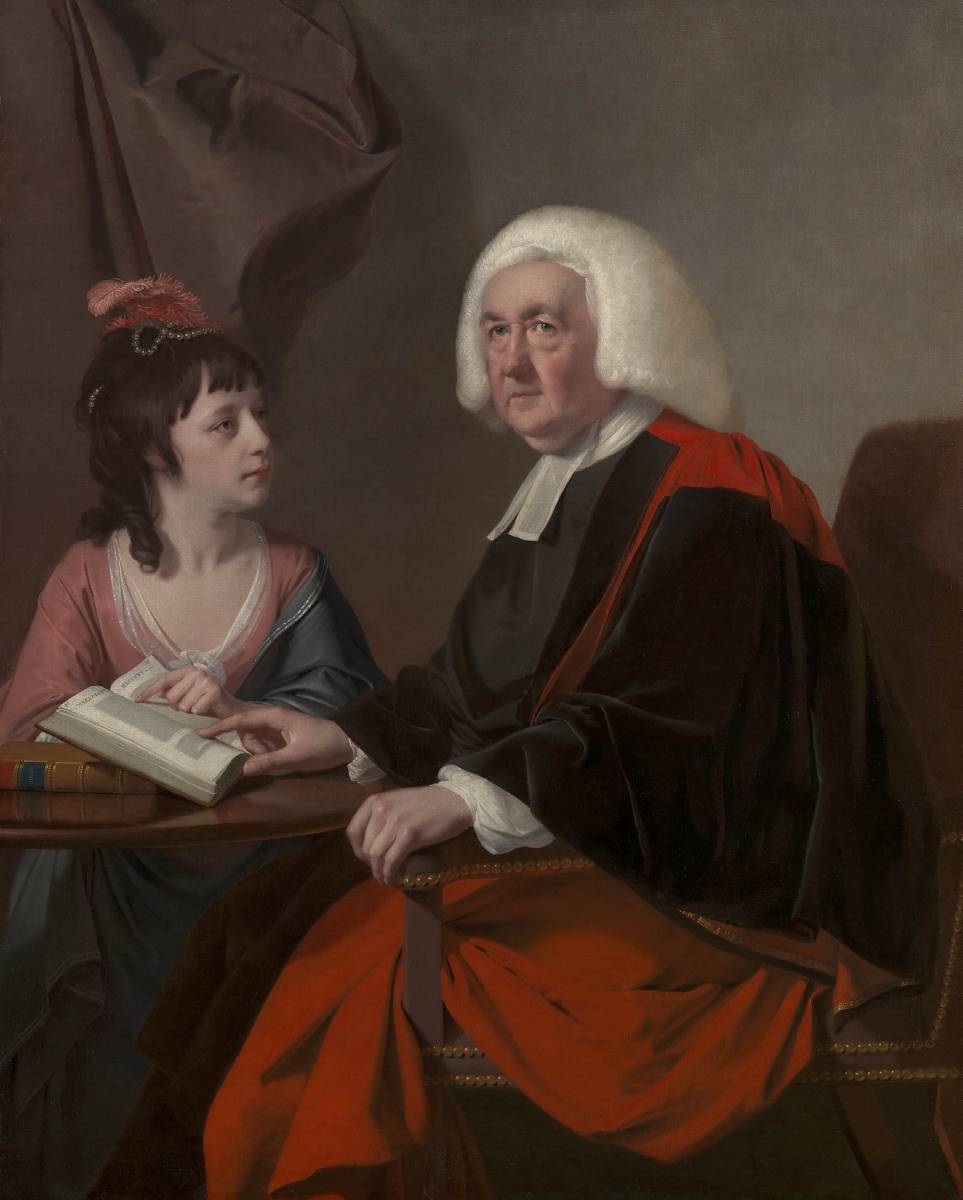New Faces at the Museum of Fine Arts
Boston’s Museum of Fine Arts recently acquired this portrait by Joseph Wright of Derby, one of my favorite British artists of the late eighteenth century.
On 15 Apr 1776, Wright wrote to a relative, “I am now painting a half length of D.r Wilson & his adopted Daughter Miss Macauley.” He described undertaking the job as “for reputation only” as he tried to build up a clientele in Bath.
The Rev. Dr. Thomas Wilson was a distinguished London minister. He was also the main patron of historian Catharine Macaulay, who in 1763 began publishing her major work, eventually titled The History of England from the Accession of James I to that of the Brunswick Line.
Macaulay gave birth to a daughter in 1765. The next year, her obstetrician husband died. She continued to write, becoming more open about her radical politics both in pamphlets and in her history as the events she recounted approached the present day.
In 1772 the Rev. Dr. Wilson’s wife died. After that, he spent most of this time in Bath, inviting Mrs. Macaulay and her daughter to join him. In 1775 the childless widower adopted eleven-year-old Catherine Sophia Macaulay as his heir. He also granted her mother the lease of the Bath house and promised her an annuity.
The dealer of this painting, Lowell Libson and Jenny Yarker Ltd., points out that Wright showed Catherine Sophia and her adopted father reading her mother’s history, so Catharine Macaulay appears in the painting symbolically. Likewise, when Robert Edge Pine painted Macaulay the previous year, he depicted her with five volumes and a letter inscribed, “Revd. Dr: Thos Wilson Citizen of London and Rector of Wallbrook.”
The dealer also notes how Wright portrayed Catherine Sophia and Wilson as sharp contrasts: youth versus age, feminine versus masculine, pastels versus red, black, and white. Yet they are brought together in a discussion of her mother’s work.
The Wilson household was an intellectual center at Bath, and Wright hoped the minister would recommend him for more commissions. But jobs didn’t come in fast enough, and the painter returned to his home territory of Derby in 1777.
The year after that, a rift opened between the Rev. Dr. Wilson and Mrs. Macaulay.
TOMORROW: Celebrating a celebrity author.
On 15 Apr 1776, Wright wrote to a relative, “I am now painting a half length of D.r Wilson & his adopted Daughter Miss Macauley.” He described undertaking the job as “for reputation only” as he tried to build up a clientele in Bath.
The Rev. Dr. Thomas Wilson was a distinguished London minister. He was also the main patron of historian Catharine Macaulay, who in 1763 began publishing her major work, eventually titled The History of England from the Accession of James I to that of the Brunswick Line.
Macaulay gave birth to a daughter in 1765. The next year, her obstetrician husband died. She continued to write, becoming more open about her radical politics both in pamphlets and in her history as the events she recounted approached the present day.
In 1772 the Rev. Dr. Wilson’s wife died. After that, he spent most of this time in Bath, inviting Mrs. Macaulay and her daughter to join him. In 1775 the childless widower adopted eleven-year-old Catherine Sophia Macaulay as his heir. He also granted her mother the lease of the Bath house and promised her an annuity.
The dealer of this painting, Lowell Libson and Jenny Yarker Ltd., points out that Wright showed Catherine Sophia and her adopted father reading her mother’s history, so Catharine Macaulay appears in the painting symbolically. Likewise, when Robert Edge Pine painted Macaulay the previous year, he depicted her with five volumes and a letter inscribed, “Revd. Dr: Thos Wilson Citizen of London and Rector of Wallbrook.”
The dealer also notes how Wright portrayed Catherine Sophia and Wilson as sharp contrasts: youth versus age, feminine versus masculine, pastels versus red, black, and white. Yet they are brought together in a discussion of her mother’s work.
The Wilson household was an intellectual center at Bath, and Wright hoped the minister would recommend him for more commissions. But jobs didn’t come in fast enough, and the painter returned to his home territory of Derby in 1777.
The year after that, a rift opened between the Rev. Dr. Wilson and Mrs. Macaulay.
TOMORROW: Celebrating a celebrity author.


No comments:
Post a Comment